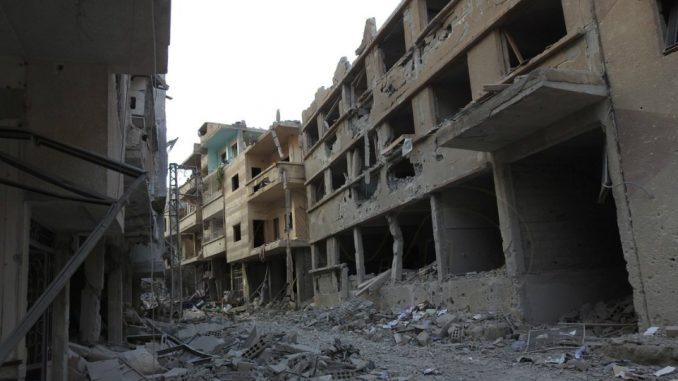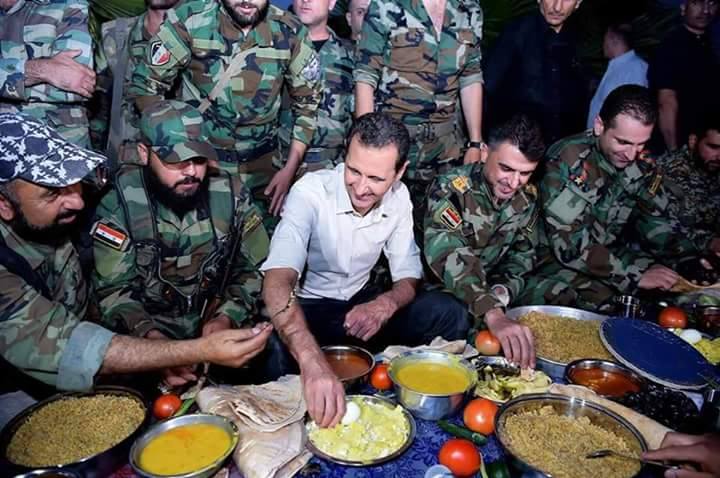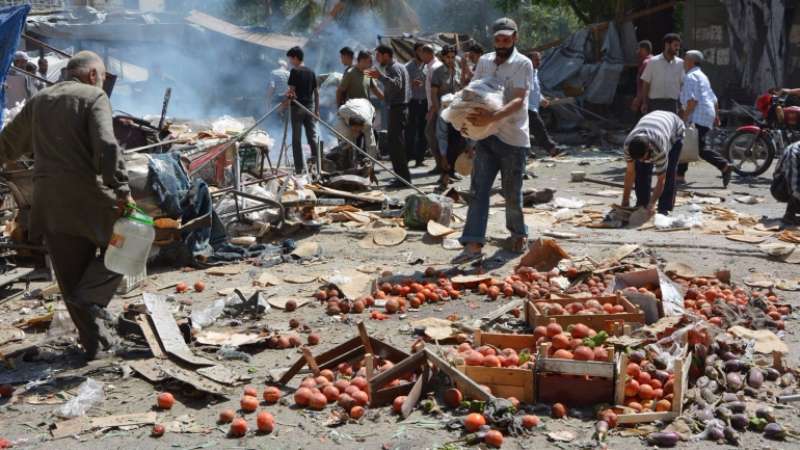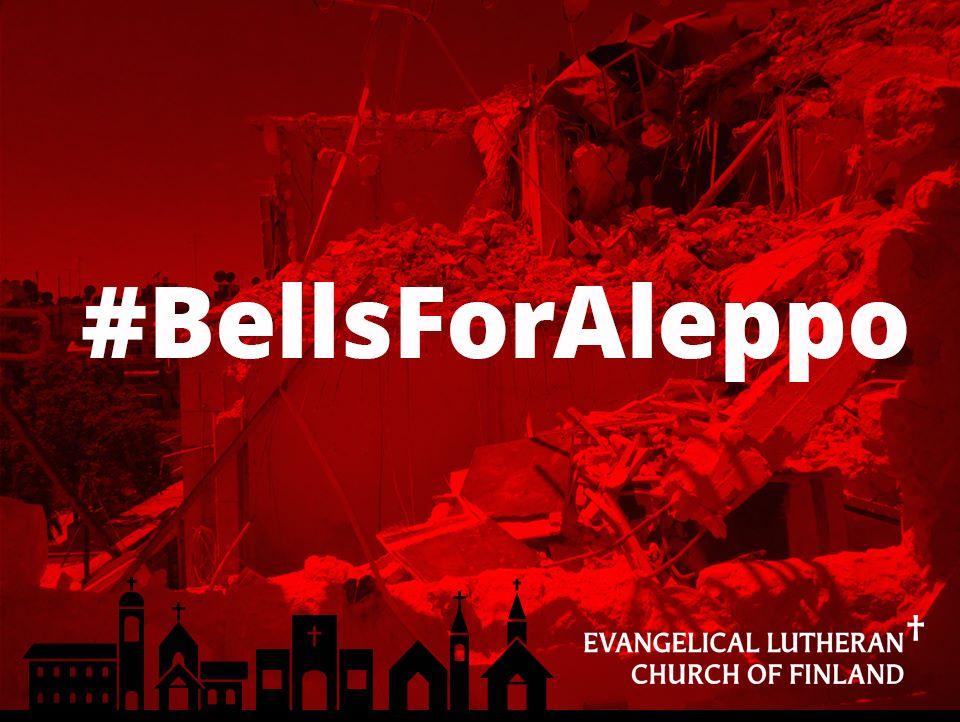
Representatives of Syria opposition fighters and civilians in Wadi Barada valley in Damascus western countryside reached Saturday a new ceasefire deal with Assad regime, while regime media said the area was secured in military operations.
Assad regime forces backed by Hezbollah and Shia militias have launched the attack on Wadi Barada valley since 22 December, with daily bombing and air raids on the area. The water in Damascus has been cut ever since.
Rebels say the army is seeking to recapture the area, where a major spring provides most of Damascus’s water supplies and which lies on a major supply route from Lebanon to the Syrian capital used by Hezbollah.
The daily clashes are associated with heavy shelling operations by the regime forces using tanks, artillery and mortar shells, and the launching missiles believed to be ground-to-ground, along with airstrikes by warplanes and the barrel bombs of the helicopters, which left tens casualties and injuries
The government assault has coincided with a severe water shortage in Damascus since December 22. Images from the valley’s Media Center indicate its Ain al-Fijeh spring and water processing facility have been destroyed in air strikes.
Rebels say the government bombed the water pumping station at the start of the campaign, while the government says rebels spoiled the water source with diesel fuel, forcing it to cut supplies to the capital.
Wadi Barada has been surrounded by government forces since mid-2015, but the siege was tightened in late December as the army piled on pressure seeking to secure a “reconciliation” deal.
It has won several of these deals in opposition areas around the capital, offering safe passage to surrendering rebels in return for retaking territory
Contradicting announcements
Assad regime forces entered the village of Ain al-Fija, where the spring and pumping station are located, early on Saturday, a military media unit run by Hezbollah, an ally of Damascus, reported.
“The Syrian army has entered Ain al-Fija … and raised the Syrian flag over the spring installation,” a statement by Hezbollah said, adding that the development was due to a deal reached with insurgents by which the rebels would leave the area.
Teams were preparing to enter Ain al-Fija to fix the pumping station and the army had secured control of the village, it added.
Under the deal reached between the government side and local representatives, rebels hailing from outside the Wadi Barada area would leave for the northwestern province of Idlib, an insurgent stronghold, carrying light weapons, the Observatory said.
Rebels from Wadi Barada would be allowed to leave too, but could also opt to stay and serve with pro-government forces, it added.
However, opposition sources say that the deal was reached through negotiations and not military operations.
A new round of negotiations started between representatives from Wadi Barada and Assad regime on Friday, activist Moaz al-Qalamouni said.
The rumors that pro-Assad media outlets have been spreading that Hezbollah had controlled Ein al-Fijeh spring are baseless, al-Qalamouni further said, explaining that 20 Assad terrorists, along with a pro-Assad TV reporter, have entered the spring facility to fly Assad regime’s flag and stay in the facility after opposition fighters had withdrawn from it, as a part of the deal on the condition that the Syrian Red Crescent shall enter to evacuate the wounded.
Video footage published by activists showed a number of cars belonging to the Syrian Red Crescent entering Wadi Barada.
Two failed ceasefire deals
The regime and rebel forces have reached on January 13 a deal to allow the repair teams to enter the area in return to halt the military operations and the bombing.
The opposition Wadi Barada Media Center posted pictures of maintenance equipment arriving in the water-rich Barada Valley.
However, this ceasefire failed and the clashes erupted again. The Observatory said shells hit Al-Reem banquet hall in the village of Deir Qanoun on January 15.
The SOHR said besides the fatalities, at least 20 other people were wounded in the attack, some of them critically.
The Media Committee of Wadi Barada valley announced again on January 19 reaching a preliminary agreement between opposition fighters in the valley and Assad regime.
The regime delegation met with civil and military representatives from the valley, and they agreed on a number of terms, but the agreement has fallen apart again.
The Wadi Barada valley, located 18 kilometers northwest of Damascus, has been under heavy bombing and artillery shelling by Hezbollah and Assad terrorists for the past 38 days. The attacks killed many civilians and caused widespread damage to property, including the vital Ein al-Fijeh spring facility which provides over four million people in Damascus and its countryside with water.
The Syrian crisis began as a peaceful demonstration against the injustice in Syria. Assad regime used to fire power and violence against the civilians and led to armed resistance. 450.000 Syrians lost their lives in the past five years according to UN estimates, and more than 12 million have lost their homes.



